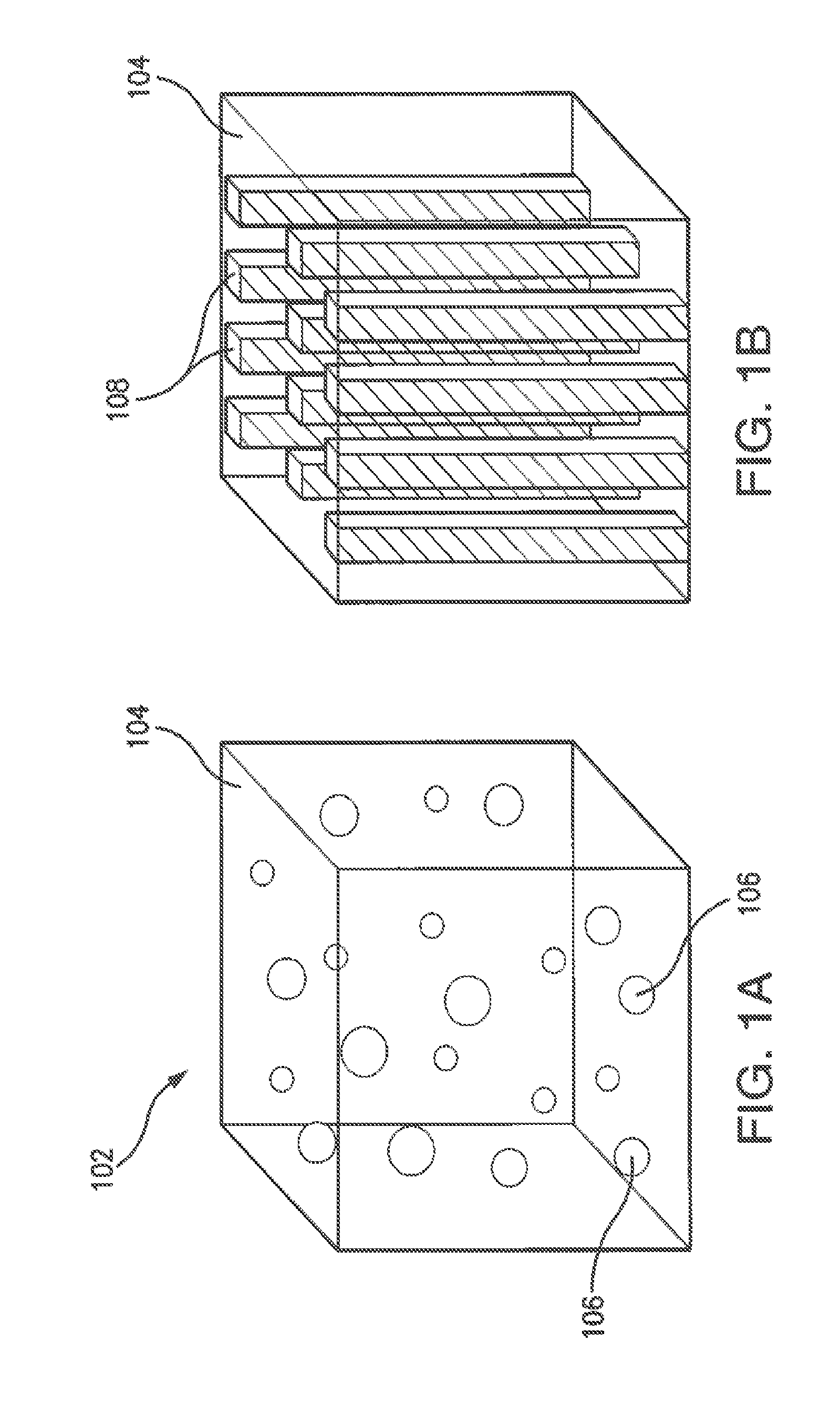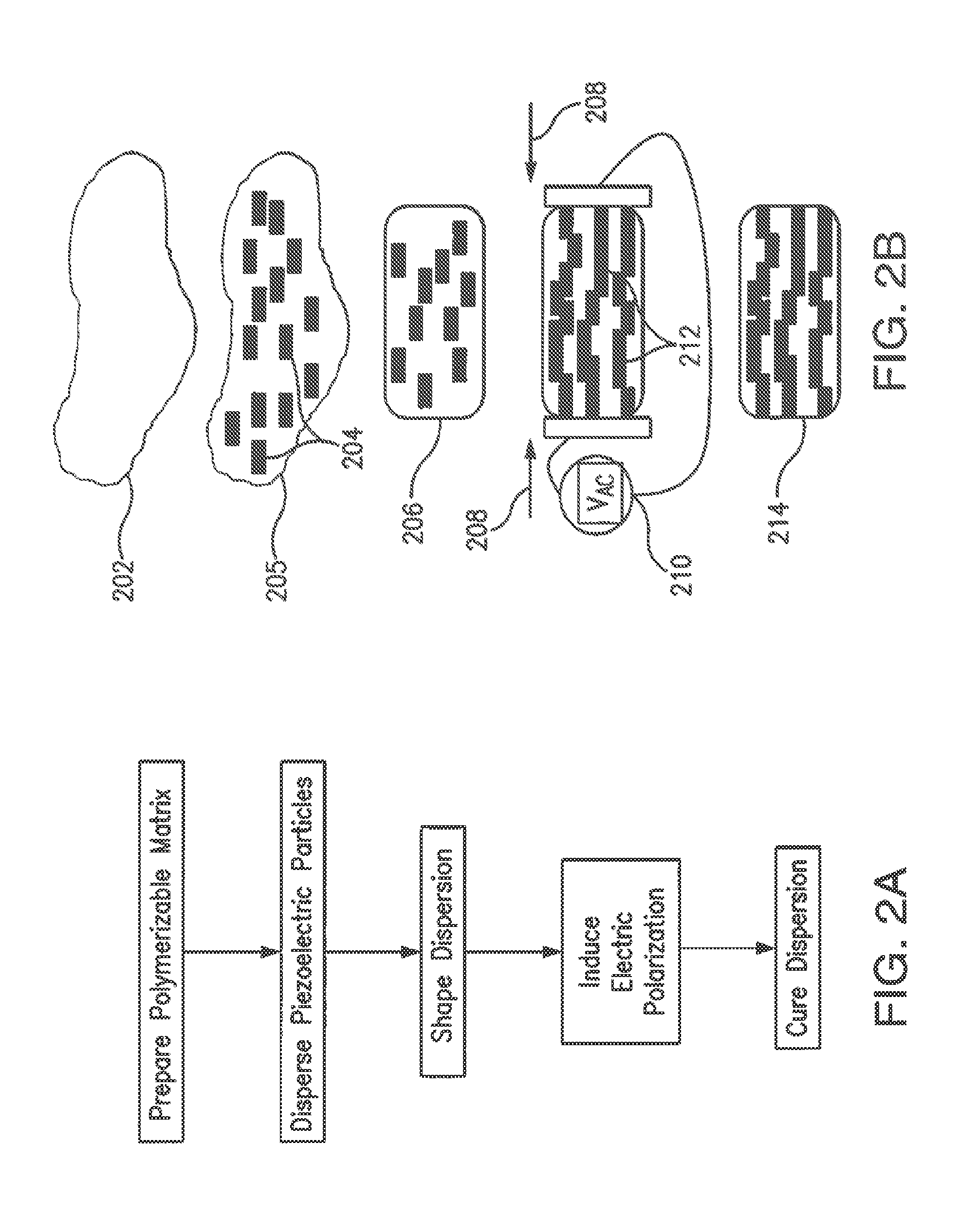Piezoelectric composites and methods of making
a composite material and composite technology, applied in the field of piezoelectric composite materials, can solve the problems of ectopic bone formation, substantial risk of complication, and user compliance with externally worn devices
- Summary
- Abstract
- Description
- Claims
- Application Information
AI Technical Summary
Benefits of technology
Problems solved by technology
Method used
Image
Examples
example 1
Preparation of 1-3 Composite using DEP
[0186]Structured 1-3 composites were prepared using dielectrophoresis (DEP). The polymerizable matrix for these composites was a two part resin (302-3M, Epotek), and the particles were 5 micrometer barium titanate. Composites were structured using an electric field strength of 1 KV / mm and a frequency of 1 KHz. The resulting dielectric and piezoelectric properties of the composite materials were characterized using well-known techniques as described below.
[0187]Dielectric characterization was conducted using a Hioki 3522-50 LCR meter (Hioki EE Corporation, Negano, Japan). This meter is used to assess the capacitance, and resistance of the samples. This information, coupled with knowledge of sample geometry, can be used to determine a sample's resistivity, conductivity, and dielectric constant. The meter can also assess the dielectric loss factor (tan ∂). Measurements are carried out at room temperature, at frequencies from DC to 1 KHz. Confidence...
example 2
Piezoelectric Composite Spinal Fusion Interbody Implant
[0204]Provided herein is the development of a piezoelectric composite biomaterial and interbody device (spinal implant) design for the generation of clinically relevant levels of electrical stimulation to help improve the rate of fusion for in patients.
[0205]A lumped parameter model of the piezoelectric composite implant was developed based on a model that has been utilized to successfully predict power generation for piezoceramics. Seven variables (fiber material, matrix material, fiber volume fraction, fiber aspect ratio, implant cross-sectional area, implant thickness, and electrical load resistance) were parametrically analyzed to determine their effects on power generation within implant constraints. Influences of implant geometry and fiber aspect ratio were independent of material parameters. For a cyclic force of constant magnitude, implant thickness was directly and cross-sectional area inversely proportional to power ge...
PUM
| Property | Measurement | Unit |
|---|---|---|
| Length | aaaaa | aaaaa |
| Fraction | aaaaa | aaaaa |
| Fraction | aaaaa | aaaaa |
Abstract
Description
Claims
Application Information
 Login to View More
Login to View More - R&D
- Intellectual Property
- Life Sciences
- Materials
- Tech Scout
- Unparalleled Data Quality
- Higher Quality Content
- 60% Fewer Hallucinations
Browse by: Latest US Patents, China's latest patents, Technical Efficacy Thesaurus, Application Domain, Technology Topic, Popular Technical Reports.
© 2025 PatSnap. All rights reserved.Legal|Privacy policy|Modern Slavery Act Transparency Statement|Sitemap|About US| Contact US: help@patsnap.com



